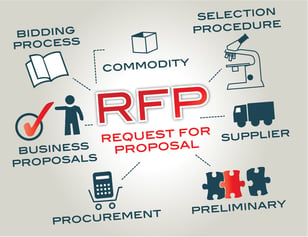The Nobel Prize for Economics was just awarded to two individuals “for their contributions to contract theory.” A Nobel Prize for contract management, can you believe it? Oliver Hart and Bengt Holmström’s key takeaway for their Nobel Prize is recognizing that the relationship between two parties in a contract is based on the contract being mutually beneficial and that each party is best incentivized to keep their side of the contract.
This is a timely award, notably that it is another reminder that there is little value in negotiating contracts that add value for just one party. <Tweet to share this thought> What does the other party get out of the contract for keeping it?
In order to derive the greatest value (both quantitatively and qualitatively) from a given agreement, both sides must be incentivized to keep it. We, in the healthcare world, don’t care for the term “incentivization” as that conjures up images of lawyers shaking papers and shouting at such a thought. But when we talk about incentives, we are at the  minimum talking about something that motivates or encourages one to do something (thanks Google!), more specifically contractual obligations that are beneficial for the hospital as well as vendors.
minimum talking about something that motivates or encourages one to do something (thanks Google!), more specifically contractual obligations that are beneficial for the hospital as well as vendors.
For a hospital, value is derived from lower costs and service level requirements that ensure services and/or products are being provided to the hospital in ways that meet Joint Commission standards, clinical requirements, and training and education, among other important deliverables.
A supplier’s value comes from dollars being spent on their product, among other things, including in some cases, working to better patient safety and satisfaction. The supplier wouldn’t be there if there wasn’t a dollar amount justifying to their C Suite why they should be there.
There could be different approaches to making such a mutually beneficial agreement happen.
- One, where two companies emailing, exchanging calls, and trading drafts of documents while days pass like leaves falling from a tree. One quarter passes, then four. A year and a half passes with no actual improvement for the hospital, either to the bottom line or to strengthening SLAs that can work to better patient safety and satisfaction. I’ve been part of contract negotiations that go on for years (this is not an overstatement).
- Or, alternatively, using RFPs which have become the golden standard within many industries, crossing through healthcare, the public sector, loc
 al governments, and higher education. Requests for Proposals offer the opportunity to gauge the open market – what value propositions are out there from vendors that supply the same or equivalent products and services? It is an opportunity not only to negotiate pricing but to potentially identify inefficiencies in the ordering system, to reduce 1,000, SKUS to 700, to ask vendors to provide industry best practices to see how the hospital can improve or to confirm that they are leading best practices nationwide. This is also the place to put contractual requirements in place that control future add-on costs that bloat dollar spend. I’ll address this in a bit.
al governments, and higher education. Requests for Proposals offer the opportunity to gauge the open market – what value propositions are out there from vendors that supply the same or equivalent products and services? It is an opportunity not only to negotiate pricing but to potentially identify inefficiencies in the ordering system, to reduce 1,000, SKUS to 700, to ask vendors to provide industry best practices to see how the hospital can improve or to confirm that they are leading best practices nationwide. This is also the place to put contractual requirements in place that control future add-on costs that bloat dollar spend. I’ll address this in a bit.
Contracts that result from RFPs find many of their incentives to both sides addressed within the initial RFP. Examples include:
- Award Scenarios that address directly that if a supplier meets “x” requirements, the hospital is willing to provide them a single source award…. Vendor – Score: 1
- SLAs that work to improve patient safety and satisfaction, resulting in higher HCAHPS scores (resulting in higher reimbursement)…. Hospital – Score: 1
- Lower pricing that results in a happier CFO…. Hospital – Score: 1
It’s certainly never a negative if a hospital ends up getting more perceived value from a contract than a supplier, but the key is that the hospital will get value if they are willing to offer the supplier value (market share).
Overall, the management of a well negotiated contract should be less burdensome and require less, well, management, than a poorly negotiated contract or no contract at all. Some best practices for managing value added contracts include:
- Accounting for All Costs - All costs should be negotiated in the RFP, accounting for all costs that will be reflected in future invoices to avoid the requisite surprise item, “Shipping / travel / random and meaningless designation isn’t an allowable cost in our contract!” This is very important because what you negotiate for line items could be great savings on a line item basis, but if all potential costs aren’t accounted for and defined prior to contracting, vendors could make up for the decrease by including a
 vague line item that costs exactly the savings you accounted for in line items.
vague line item that costs exactly the savings you accounted for in line items. - Invoice Requirements – Invoice detail requirements should be addressed in the RFP provided by the SLA or line item and not just an oblique description that shadows an entire month’s detail. In working with a client recently, it was made clear that in an audit of invoices, contracted services weren’t detailed to the nth degree and it was impossible to audit simply because services per facility weren’t detailed out in that line item basis. It resulted in a frustrated financial analyst and a potential risk for the vendor to be defining services and costs. It’s within your rights as a paying customer to ask for invoices to account for a certain amount of detail, whether that’s facility and/or department detail, breakdown of services during a monthly visit and an itemized cost detail of that breakdown or something else.
We live in a world in which we want to keep our options open, but in an increasingly competitive world where there are more players to compete for your business and to manage, there are benefits to making a contractual commitment. A well-managed contract will take you a long way to reduce the stress of managing the RFP process and extract the most actual value of the contract, through its life.
Medpricer can help you manage and develop contracts that will add the most value for your hospital. Call us at 888.453.4554 to get started.
If you liked this post, click and share now!
